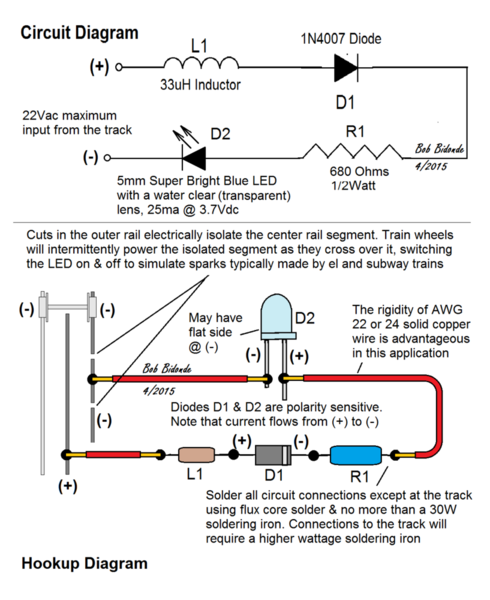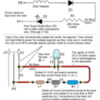I did some research on the OGR Forum for posts about spark simulation, and what I found was inconclusive. So the reason for this post is to document a spark simulation circuit that I built and tested on the El of my layout. If you downloaded the prior sketch I posted before today (4/18/2015), discard it and download the updated sketch below.
A Stan mentions in the post below, there are alternatives for Diode D1. I used a 1N4007 because that is what I have on hand, and of all of the 1N400X series diodes, the 1N4007 is the most rugged in terms of reverse voltage.
I iterated the size of the D2 LED and the value of the R1 Resistor. The 5mm Super Bright Blue LED with a water clear lens makes more dramatic spark simulations than a similar 3mm LED, and the water clear lens makes the LED difficult to spot when it is not illuminated. 680 Ohms for R1 gives a realistic spark simulation with the room lights on, yet it keeps the current flow through the LED below its maximum specification value for long life.
Build a test circuit before going into production, and optimize its geometric shape to fit the space you have available. In my application on the Flushing IRT El on Long Island, I spaced spark simulators about 3 feet apart, hence my reason for a single LED circuit rather than a string of LEDs. The simulators are impressive to see in action.
There is a post below with a sketch of the installation technique I use on my layout. Finally, the sketch in this post is its last iteration.








